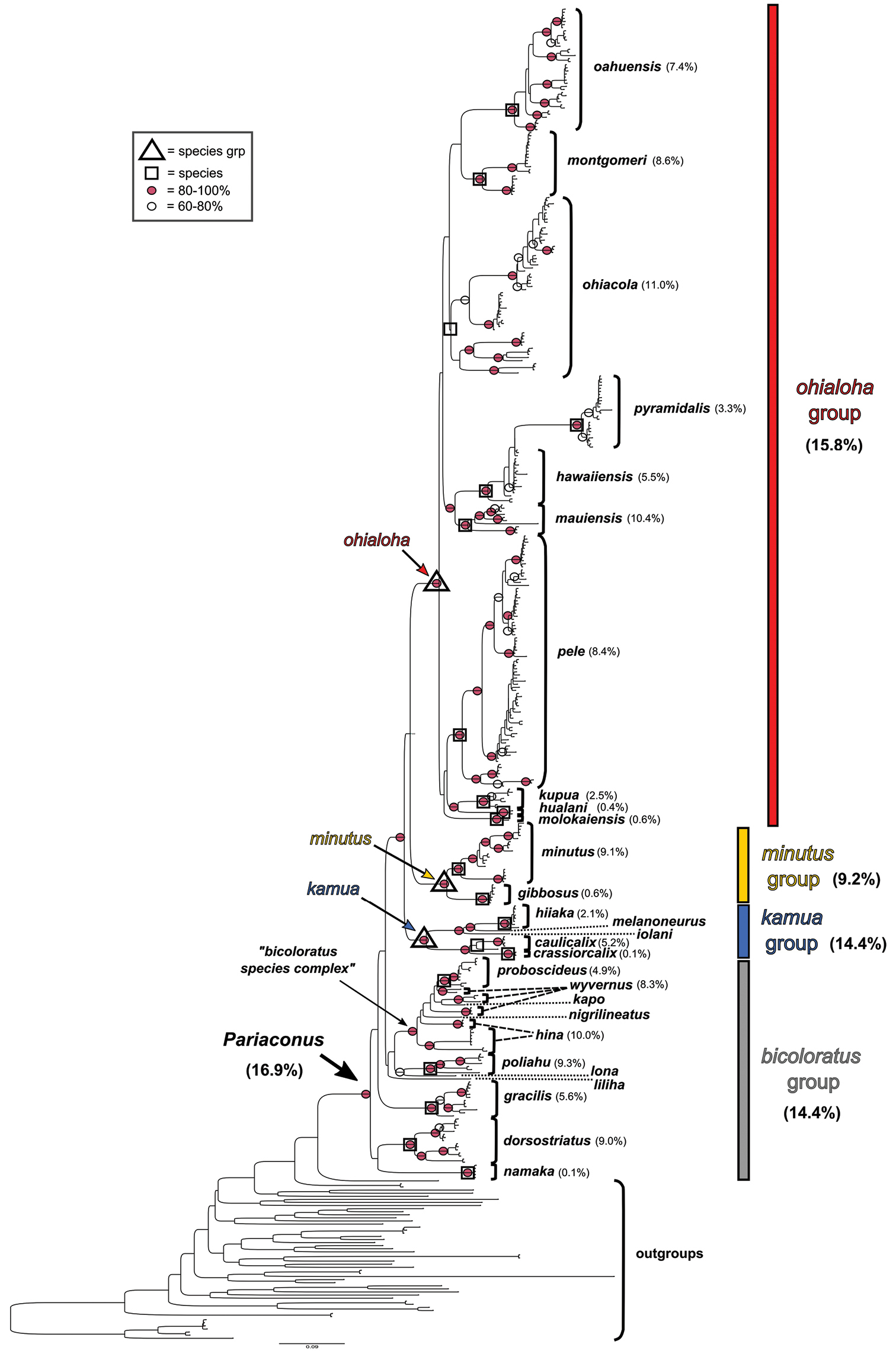
|
||
|
Best maximum likelihood topology (-lnL = -33769.25, combined COI and cytB data using RAxML with 1000 bootstrap replicates). Included are 432 unique haplotypes (381 within Pariaconus and 51 representing outgroups) recovered from 537 individuals sampled. The four recognized species groups within Pariaconus are indicated as well as the “bicoloratus species complex” and 28 described species. Moderate to strong support for nodes within Pariaconus is indicated. Dotted lines indicate species either with only one individual sampled or several individuals with only one unique haplotype. Dashed lines indicate two species (P. hina, P. wyvernus) for which intraspecific haplotypes were not recovered as monophyletic, both species are within the “bicoloratus species complex”. Two taxa (P. ohiacola, P. caulicalix) are recovered as topologically monophyletic (in both ML and NJ analysis) but without bootstrap support. Two species are recovered as sister taxa in NJ analysis (P. hawaiiensis, P. pyramidalis), but here the ML analysis places one (P. pyramidalis) on a long branch nested within the other (P. hawaiiensis), reflecting a likely evolutionary gall shift in situ on Hawaii. All other taxa, including recognized intraspecific forms and variations, are reasonably to strongly supported as monophyletic (80-100% support). Maximum genetic distance within species groups and maximum intraspecific genetic distances (p-distance in PAUP*) are shown in parenthesis for all taxa with more than one haplotype. |